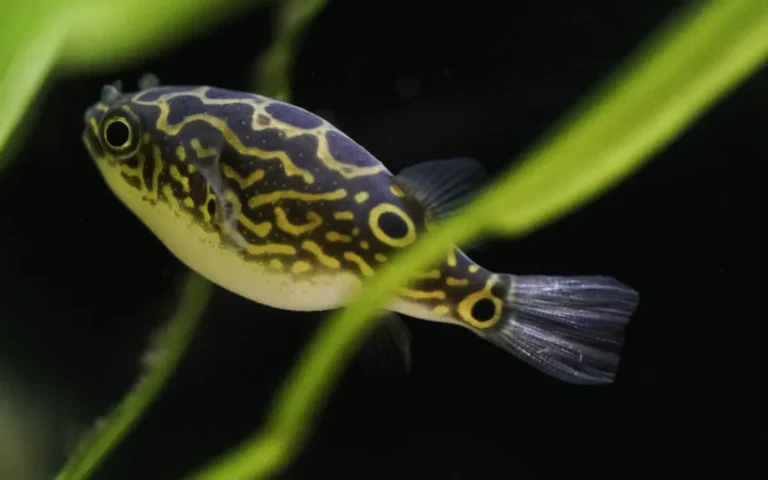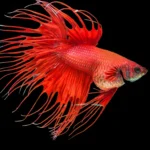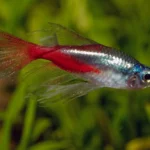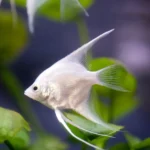The best tank mates for Blue Acara are peaceful, medium-to-large fish that thrive in similar water conditions and can hold their own without being aggressive. Ideal companions include Rainbowfish, Bristlenose Plecos, Keyhole Cichlids, and Silver Dollar Fish. These species avoid territorial conflict, share tank space respectfully, and contribute to a calm, balanced aquarium.
Can Blue Acara Live in a Community Tank?
Yes, Blue Acaras can live in a community tank—if conditions are right and tank mates are carefully chosen. While they are technically semi-aggressive, Blue Acaras are known to be among the most peaceful South American cichlids. They are intelligent, curious, and typically tolerant of other fish, especially in well-managed aquariums.
Aggression is most likely to appear during breeding periods, in overcrowded tanks, or when kept with other similarly sized or patterned cichlids that they might see as rivals. Providing plenty of space, hiding spots, and visual breaks using driftwood or plants can help reduce stress and prevent territorial behavior.
With a proper tank size (55 gallons or more) and the right tank mates—those that are peaceful, confident, and not easily bullied—Blue Acaras make excellent centerpieces in vibrant community aquariums.
What to Consider Before Choosing Blue Acara Tank Mates
Before adding tank mates to your Blue Acara setup, it’s important to create an environment where both the Acaras and their companions can thrive. These key factors will help prevent stress, aggression, and compatibility issues:
1. Minimum Tank Size: 55 Gallons or More
Blue Acaras are medium-sized cichlids that need space to roam and establish territory. A minimum of 55 gallons is recommended for a pair or a peaceful community tank. Larger tanks reduce territorial tension and make it easier to add multiple species safely.
2. Match Water Parameters
Blue Acaras do best in tropical conditions—temperatures between 72–82°F and a pH range of 6.5 to 7.5. Choose tank mates that thrive in similar water so all fish remain healthy and stress-free.
3. Avoid Territorial Overlap
Since Blue Acaras typically claim the mid to lower levels of the tank, avoid pairing them with other fish that are bottom-dwelling and territorial. Instead, choose top swimmers or fish that occupy different tank zones to reduce the risk of conflict.
4. Feeding Habits and Diet Compatibility
Blue Acaras are omnivores and not picky eaters. They eat pellets, flakes, frozen foods, and live treats. Avoid pairing them with species that are too slow to compete at feeding time, or those with highly specialized diets that clash with the community feeding routine.
5. Match Size Carefully
Blue Acaras may see very small fish as food, especially if they’re quick and fit in their mouth. On the other hand, large or highly aggressive tank mates can intimidate or injure them. Ideal companions are similarly sized or slightly larger, but peaceful enough not to provoke aggression.
List of 14 Blue Acara Tank Mates
These fish are ideal companions because they are fast, peaceful, and occupy different parts of the tank—minimizing competition and reducing the chances of aggression. They match the Blue Acara in size and temperament, making them excellent additions to a community setup.
1. Rainbowfish (Melanotaenia spp.)
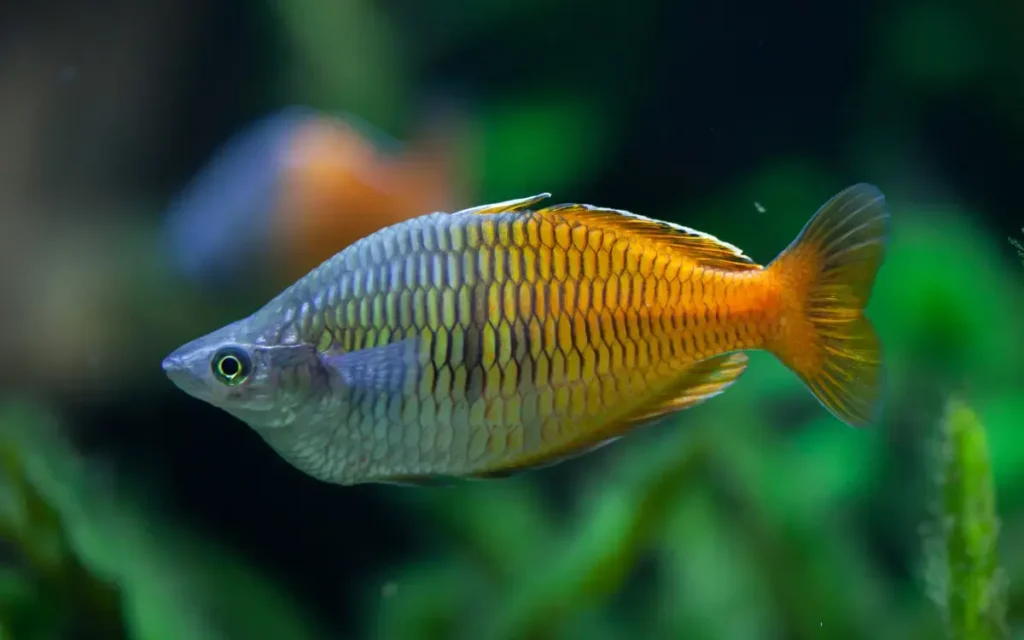
Rainbowfish are active, colorful, and peaceful schooling fish that thrive in the mid-to-upper levels of the tank. They’re quick swimmers, large enough not to be seen as prey, and adaptable to the same temperature and pH range as Blue Acaras. Their lively schooling behavior adds movement and color to the aquarium without disturbing the more grounded Acaras.
2. Silver Dollar Fish (Metynnis argenteus)
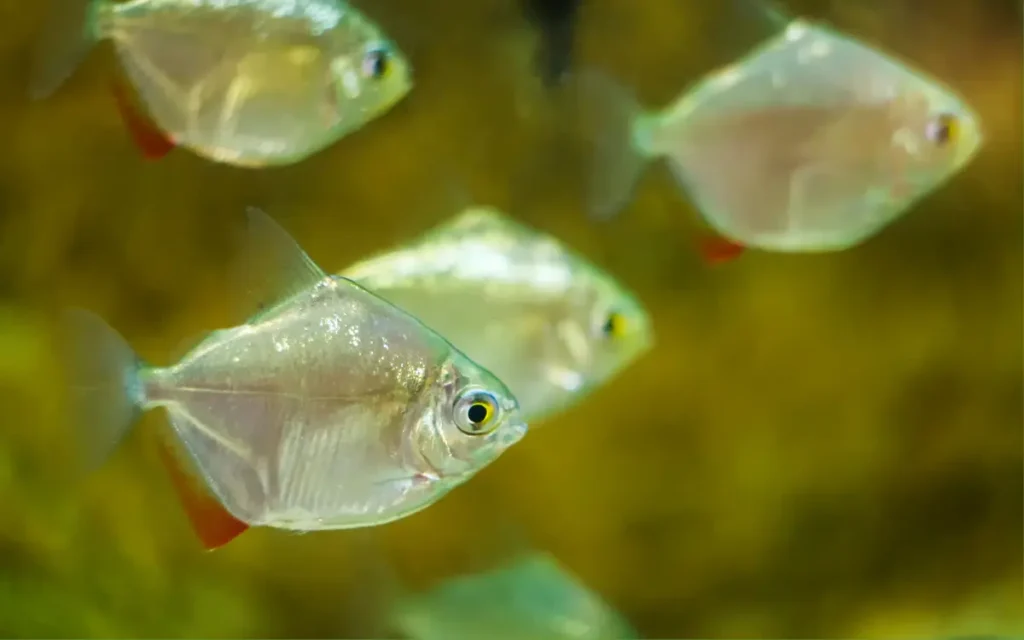
Silver Dollars are peaceful, plant-eating fish that do well in large community tanks. They grow large enough to avoid being harassed and prefer to school in groups of five or more. While they may nibble soft plants, they’re excellent tank mates for Blue Acaras due to their calm nature and size compatibility.
3. Giant Danios (Devario aequipinnatus)
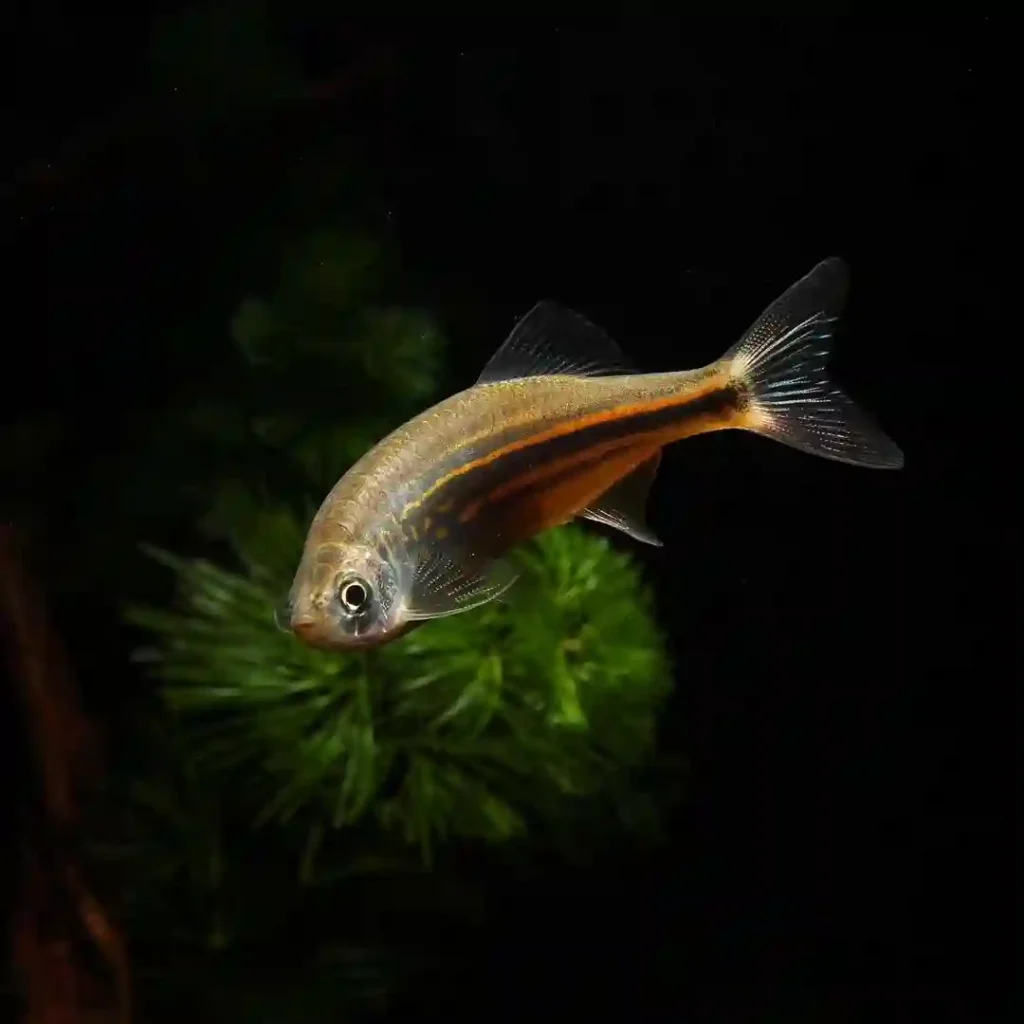
These fast-swimming fish are excellent top-level companions for Blue Acaras. Their speed helps them avoid any unwanted attention, and their semi-bold nature allows them to cohabitate with mid-level cichlids. They’re also hardy and thrive in the same warm, slightly alkaline water conditions.
Peaceful Bottom Dwellers for Blue Acaras
While Blue Acaras often explore the lower half of the tank, they can still share space with non-aggressive bottom dwellers—as long as each species has enough room and hiding spots. The following bottom-level fish are peaceful, sturdy, and unlikely to provoke territorial behavior.
4. Bristlenose Pleco (Ancistrus spp.)
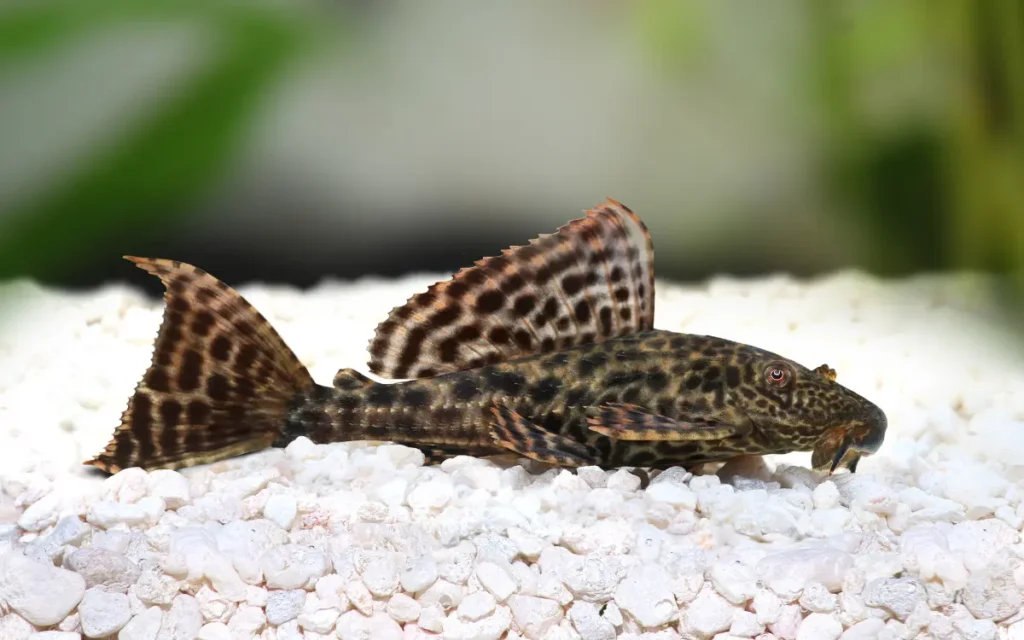
Bristlenose Plecos are excellent algae eaters and one of the best bottom-dwelling companions for Blue Acaras. They are heavily armored, stay out of the way, and prefer to hide during the day. Bristlenose Plecos rarely interact with other fish and won’t challenge Acaras for space or food.
5. Corydoras Catfish (Corydoras spp.)
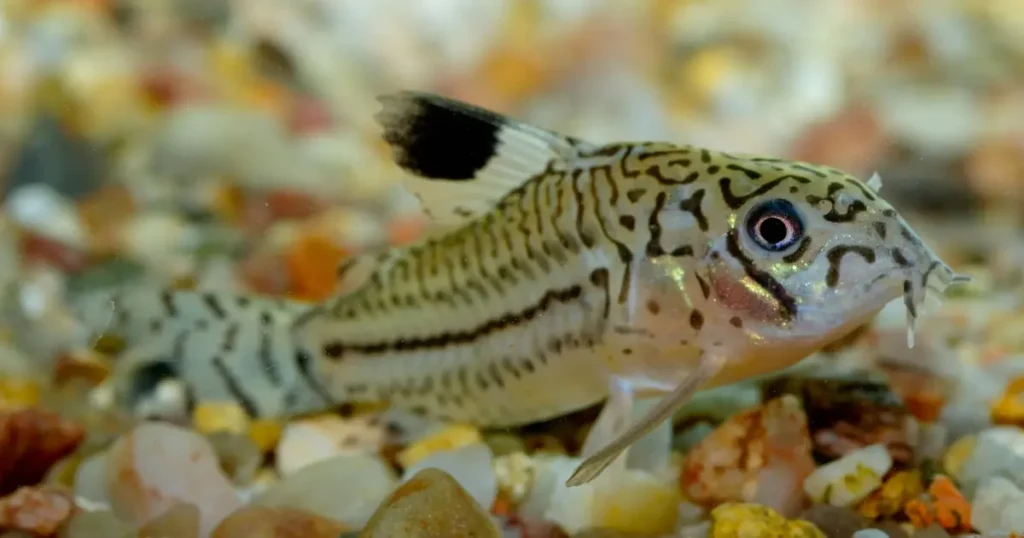
Corydoras are gentle, social catfish that spend their time sifting through substrate for leftovers. While small, they’re quick and typically kept in groups of six or more, which helps minimize stress. In a large tank with good structure, they coexist peacefully with Blue Acaras, especially when there’s enough territory separation.
6. Clown Loaches (Chromobotia macracanthus)
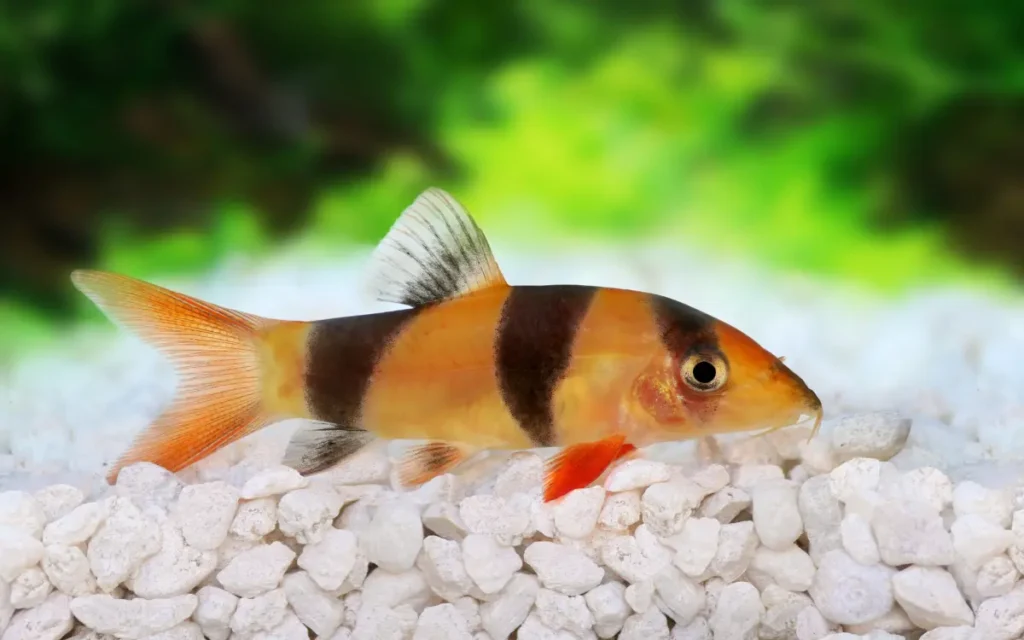
Clown Loaches are playful, bottom-dwelling fish that grow large over time and do best in groups. Their size and activity level make them good companions for Blue Acaras in larger tanks (75+ gallons). While they may explore all tank levels, their social behavior doesn’t usually cause conflict.
Compatible Cichlids and Semi-Aggressive Fish
While cichlids often get labeled as aggressive, not all are hostile—and some pair surprisingly well with Blue Acaras. The key is choosing peaceful to moderately assertive species that don’t compete directly for territory and are similar in size or smaller. Below are some cichlids and semi-aggressive fish that make excellent companions when the tank is large and well-structured.
7. Keyhole Cichlids (Cleithracara maronii)
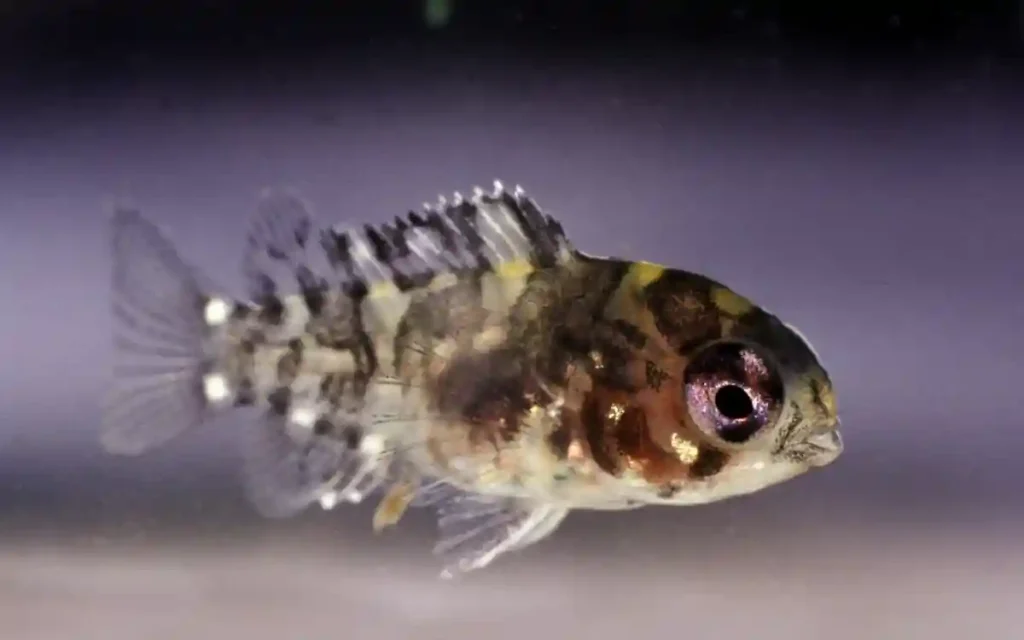
Keyhole Cichlids are known as one of the most peaceful cichlids in the hobby. Their shy, slow-moving nature and preference for staying near driftwood or planted cover make them an easy match for Blue Acaras. They’re unlikely to provoke aggression and do best in planted community tanks.
8. Bolivian Rams (Mikrogeophagus altispinosus)
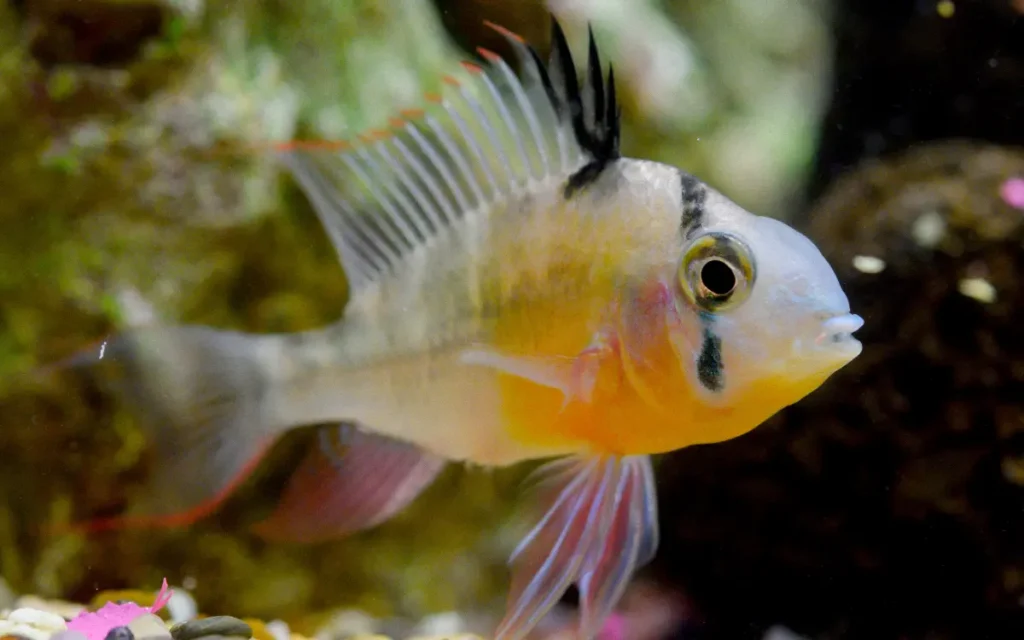
Bolivian Rams are small, peaceful cichlids that prefer to stay low in the tank. They thrive in the same temperature and pH range as Blue Acaras and rarely challenge larger tank mates. With their calm demeanor and attractive appearance, they make a great lower-tier addition to a cichlid-friendly community.
9. Angelfish (Pterophyllum scalare)

Angelfish can live with Blue Acaras in larger, vertically spacious tanks where territories are well divided. While both species can be territorial at times, they tend to occupy different swimming zones—Angelfish near the middle and top, and Acaras near the bottom. As long as aggression is monitored, they can coexist peacefully.
10. Kribensis (Pelvicachromis pulcher)

Kribensis are dwarf cichlids that are usually peaceful outside of breeding. They prefer planted tanks with caves or hiding areas and won’t usually challenge a larger Blue Acara. In tanks with enough structure and space, they add personality without triggering aggression.
Other Peaceful Tank Mates Worth Considering
Not all great companions for Blue Acaras need to be cichlids or bottom dwellers. Some peaceful community fish are robust enough to coexist comfortably—as long as they’re not small enough to be eaten or aggressive enough to pick fights. These fish add color, movement, and variety to a Blue Acara tank without disrupting the balance.
11. Swordtails (Xiphophorus helleri)
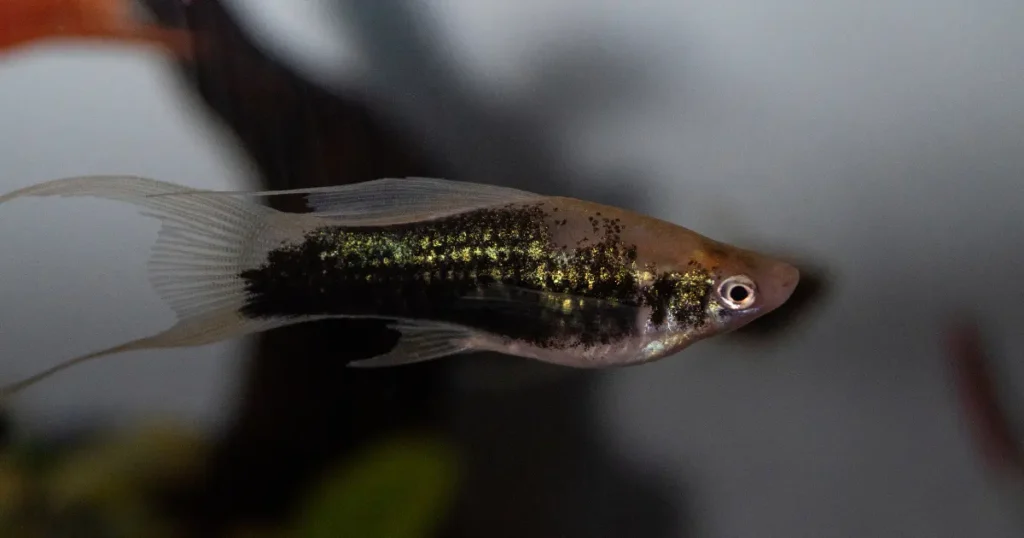
Swordtails are hardy, mid-to-top swimmers that do well in larger community tanks. They’re peaceful yet confident, which helps them hold their own around more assertive fish like Acaras. Their quick movements and schooling nature make them a lively, compatible option.
12. Mollies (Poecilia sphenops)
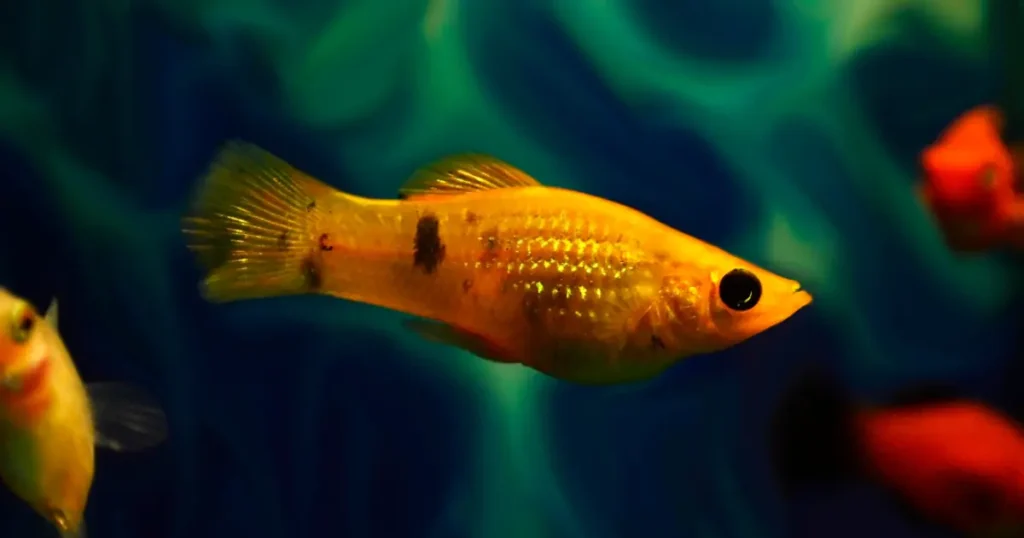
Mollies are adaptable livebearers that prefer slightly alkaline water—matching well with the Blue Acara’s preferred conditions. They’re fast, curious, and unlikely to start conflict. Keep them in groups to reduce stress and promote natural behavior.
13. Congo Tetras (Phenacogrammus interruptus)

Congo Tetras are beautiful, flowing-finned fish that reach a decent size (3+ inches), making them safe from predation by Blue Acaras. They school in the mid-to-top levels and thrive in warm, soft to neutral water—just like Acaras. Their peaceful disposition and shimmer make them a standout addition.
14. Festivum Cichlid (Mesonauta festivus)

Festivum Cichlids are gentle, flat-bodied South American cichlids that tend to stay in the upper levels of the tank. Their calm demeanor and similar care requirements make them well-suited for large, planted community aquariums with Blue Acaras. They’re active yet non-territorial, which helps reduce stress in mixed setups.
Fish to Avoid With Blue Acaras
While Blue Acaras are relatively peaceful for a cichlid, they’re still territorial and grow to a decent size—so not every fish is a good match. Avoiding incompatible species is key to preventing stress, injury, or aggression in your tank.
Small Fish That May Be Seen as Food
Avoid tiny species that can fit into an Acara’s mouth, especially in adult tanks.
Do not keep with:
- Neon Tetras
- Guppies
- Endler’s Livebearers
- Chili Rasboras
Aggressive or Territorial Cichlids
Other aggressive cichlids may challenge your Blue Acara, leading to fights or injuries.
Avoid pairing with:
- Oscars
- Jack Dempsey
- Convict Cichlids
- Green Terrors
Long-Finned or Slow-Moving Fish
Blue Acaras may nip or stress out slow swimmers or ornamental species with long fins.
Avoid:
- Fancy Goldfish
- Bettas
- Paradise Fish
Hyperactive or Fin-Nipping Fish
Fast, nippy fish can annoy Blue Acaras and disrupt the calm environment they need.
Avoid:
- Tiger Barbs
- Serpae Tetras
- Zebra Danios (in smaller tanks)
FAQs
Can Blue Acaras live with other cichlids?
Yes, but only with peaceful or moderately tempered cichlids like Keyhole Cichlids, Bolivian Rams, or Kribensis. Avoid pairing them with aggressive or territorial cichlids like Oscars or Convicts.
Will Blue Acaras eat small fish?
They might, especially if the fish are small enough to fit in their mouths. Avoid housing them with fry or tiny species like Neon Tetras, Guppies, or Endlers.
How many Blue Acaras should I keep in a tank?
You can keep a single Blue Acara, a pair, or a small group—provided the tank is large enough. For a pair, a 55-gallon tank is the minimum. Larger setups reduce territorial disputes.
What is the best tank size for Blue Acaras with tank mates?
A minimum of 55 gallons is recommended for a Blue Acara with a few peaceful tank mates. For multiple Acaras or more diverse communities, consider a tank of 75 gallons or more.
Do Blue Acaras dig or destroy aquascapes?
While not as destructive as some cichlids, Blue Acaras may dig around plants or move substrate during spawning. Use rooted plants with strong hold or plant anchors in aquascaped setups.

